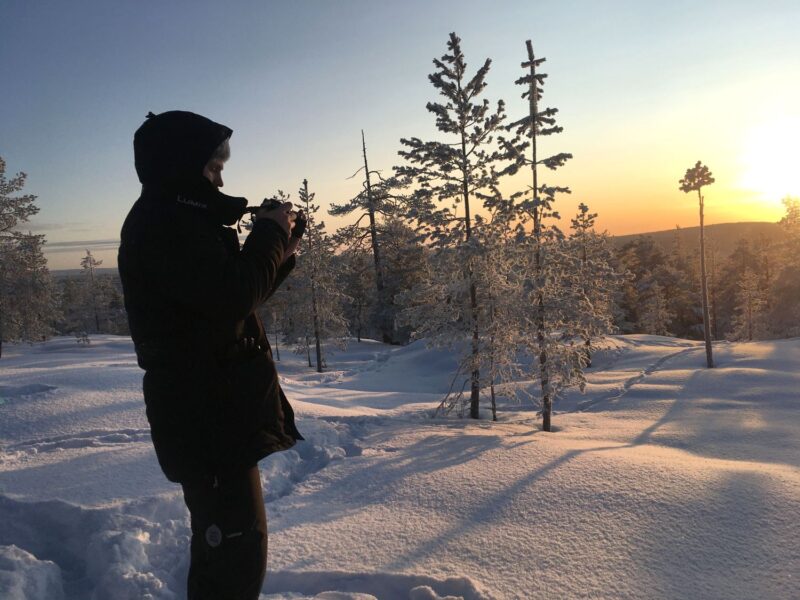How to stay warm in Lapland
Dress like a local in Lapland's arctic temperatures
How cold is it in Rovaniemi, really? How long can I be outside in Lapland? Will our kids freeze?
We hear these questions all the time — and we get it! Many visitors have never even seen snow before, so it’s totally normal to wonder what winter in Lapland really feels like. There is so many things to do in Rovaniemi during winter, but it’s essential to be prepared so you can enjoy fully. That’s exactly why we created this guide: to take the mystery (and worry) out of the cold.
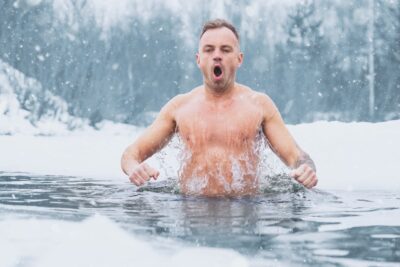
Lapland’s winter is magical, snowy, and just a little wild. One day it’s 0°C and you’re splashing through slush, and the next it’s -35°C and your eyelashes turn into tiny icicles the moment you step outside.
The good news: staying warm is totally doable (and not rocket science). It all comes down to layers, a little local know-how, and not wearing jeans in a snowstorm. We’re here to help you master the art of dressing like a true northerner — so you can enjoy the northern lights and keep all your fingers and toes cozy.
How cold is it in Lapland, really?
It depends! Temperature alone doesn’t tell the full story — humidity and wind change everything. Luckily, Lapland’s winter air is dry and crisp, not damp and bone-chilling like coastal cold. Honestly, -15°C here can feel way nicer than +2°C with freezing rain somewhere else.
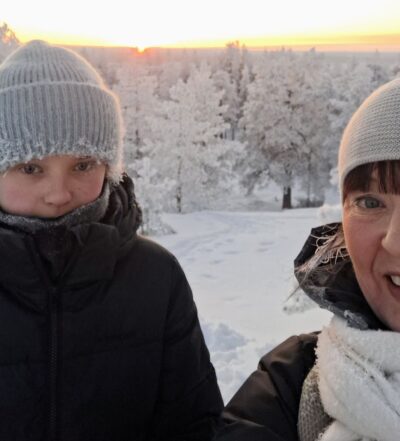
Coldest day of last winter, -35 degrees in Rovaniemi
How long can I be outside? How about our kids?
You’d be surprised how long you can play outside if you’re dressed properly!
Adults: With good layers and windproof gear, hours are no problem. Just add a hot chocolate break now and then (bonus: warm hands AND happy mood) and keep moving. Keep your beenie and gloves on even if you get warm – you will loose a lot of heat especially though your head and icy fingers are tricky to warm up outside!
Kids: They’re little heat engines when moving, but cool down fast when still. Check fingers, toes, and noses often, and bring spare mittens — snow + kids = soaked gloves every time. Golden rule: If someone says, “I’m cold,” it’s time for a warm-up — before the whiny meltdown phase begins.
Pro tips - Layer up
Layering = several thinner pieces that each do a job rather than one giant suit. This lets you adjust to activity level, temperature swings and indoor/outdoor transitions. Thin pockets of air between layers are what keep you warm. Your body heats that trapped air and it acts like insulation. If you squeeze everything skin-tight you squeeze out the air (and sometimes your blood flow) and end up colder. Aim for comfortable layers you can move in—not compression gear squeezed under a too-small jacket.
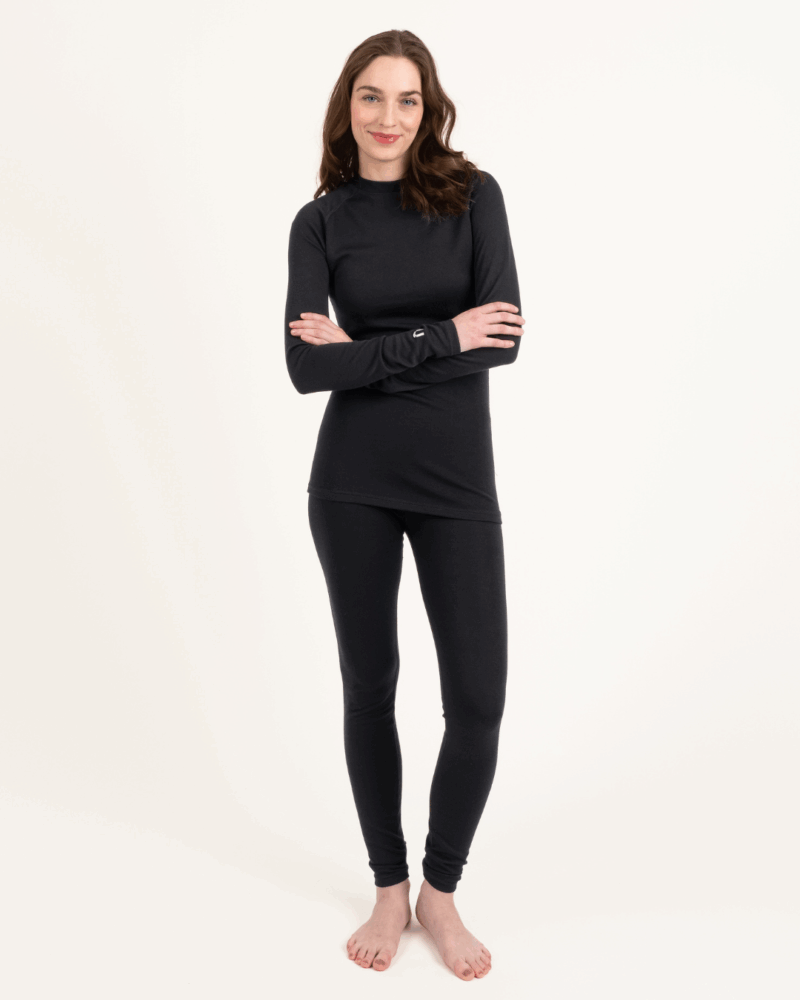
1. Base layer against the skin
Goal: Move sweat away so you stay dry. Damp = cold.
Best choice: Merino wool or merino blend (ours mixes merino + recycled poly for durability & faster dry time). Merino wool is a moisture-wicking marvel – it can absorb up to 35% of its weight and still feel warm and cozy. Stay dry, stay comfy – even when you’re working up a (snowy) sweat!
What NOT to wear: Cotton. Once wet, it clings, chills, and turns you into a popsicle. Same for cotton leggings, t-shirts, and underwear.
Change it if soaked -After sledding or snow play, swap to a dry base — especially for kids.
2. Mid Layer
Build warmth with one or two pieces depending on temp & activity.
Active days / around 0° to -10°C: Lightweight fleece.
Colder / lots of standing still (aurora watching, reindeer feeding): Thicker knit fleece or woolly sweater.
Mix & match: Start light, stash a thicker piece in your pack.
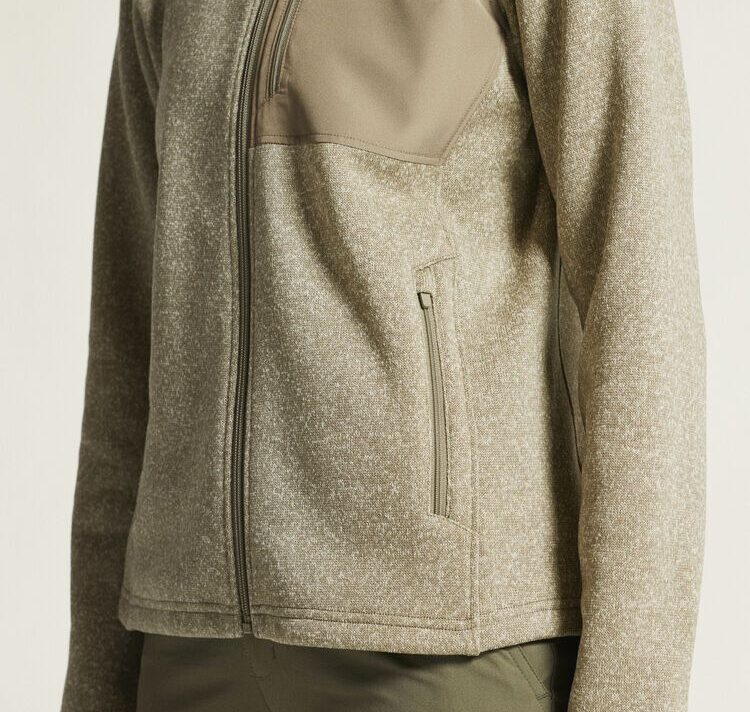
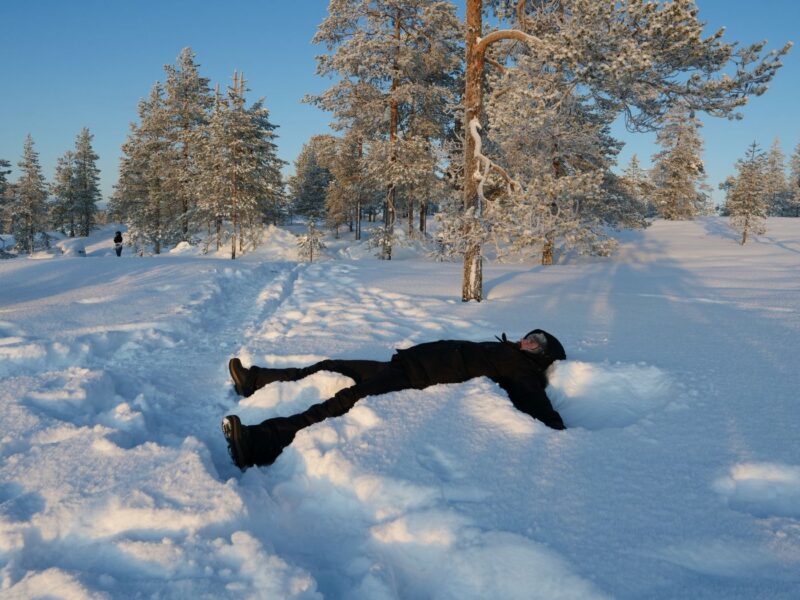
3. Outer Layer – Armor Against Wind & Snow
Your shell keeps the weather out and the warm stuff in.
Weather protection: A great outer layer is windproof, water-resistant, and breathable.
Adjustable features: Look for hoods, storm flaps, adjustable cuffs, and snow skirts to block snow entry.
Durability: Reinforced areas (knees, elbows, seat) matter when you’re sitting on a sled or building a snowman.
Two-piece suits (jacket + trousers) for adults: easier bathroom breaks, easier indoor stops, more comfort, better temp control, and yes—you look less like a lost marshmallow.
A one-piece overall for kids keeps them warmer and drier than a two-piece set by sealing out snow and cold air – no gaps, no drafts. Kids bend, climb, and tumble – and with a two-piece set, the jacket can ride up. One piece is comfortable for active play!
4. Save Your Head and Hands – Don’t skip these
Keeping your extremities warm is half the battle. These areas lose heat quickly because they have less blood flow and are often exposed to wind.
Warm Beanie: A good beanie traps heat where it matters most. Wool stays warm even if a bit damp (hello, snowball fights) and is naturally breathable.
Mittens vs. Gloves: Mittens win every time in deep cold because your fingers huddle together, sharing heat like best friends. We use insulated, windproof mittens that keep the chill out.
Inner Gloves: Thin liners or touchscreen gloves underneath are a lifesaver for quick phone use – no need to bare your skin in -20°C just to snap a photo.
Tube Scarves (Buffs): A tube scarf is safer than a dangling scarf (no getting caught in zippers or sleds) and can be pulled up over the nose when the wind bites. A lightweight one works most days, but merino wool versions add extra warmth and warm you even when wet.
